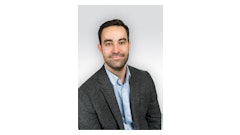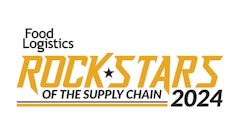
President Biden’s White House Council on Supply Chain Resilience (CSCR) recently announced a new action plan with more than 30 interventions in supply chain procurement, logistics, and planning, including major investments by the USDA, Department of Labor, and others, as well as a quadrennial supply chain review of critical industries, expansive risk monitoring initiatives, and a new supply chain data and analytics summit.
Many industry leaders praise the plan, while others worry that it will undermine industry readiness and obscure accountability of supply chain disruptions. But what does it actually mean for supply chain resilience today? In the near term, not much. Yet, the emphasis on future investments, risk monitoring, data and industry-led review emphasizes an immediate need for agile operations and puts plans in motion to bolster supply chain visibility, which includes traceability and transparency moving forward.
The CSCR’s perceived impact and what comes next
The CSCR’s campaign sets commendable goals, investments, and actions to improve supply chain resilience alone will not fix the high prices for global commodities, the prevalence of product shortages or a myriad of other supply chain impacts consumers are facing today.
Recent reports show that while the average 4-person U.S. household spent around $238 per week on food at home in October 2020, this figure rose to around $315 in October 2023, and restaurant dining and food delivery prices climbed 5.4%. While some food costs could come back down in 2024, prices are expected to increase by another 3% in the new year due to inflation, and likely additional climate pressures.
The USDA hopes to ease this burden, in part, by investing $196 million to strengthen our domestic food supply chains and create more opportunities for farmers and entrepreneurs, expanding farmer income opportunities, creating economic opportunities for people and businesses and rural areas, and ultimately lowering costs.
Additionally, outside of government intervention, there are other ways food and beverage companies can work to keep costs down and products on shelves, and it all begins with product traceability and data sharing.
Visibility: The key to supply chain fortification
Retailers and grocers can’t control the weather, crop yields, or the economy, but can ensure they have the right strategies in place to maximize available inventory, improve supply forecasting, and cut costs for consumers (ex. discounting products nearing expiration). Their ability to do so, however, hinges on one key factor: accurate inventory visibility, or in other words, their ability to “see” what they currently have in stock down to the last item and assess where the next batch of product currently sits in the supply chain.
A 2023 IDC global survey found that 46% of industry executives believe a lack of supply chain visibility and resiliency to see necessary changes in time to react effectively is the largest looming supply chain problem. Food retailers and manufacturers depend on an intricate and interconnected network to facilitate the movement of goods from origin to destination. A disruption or issue in just one part of the system can easily create a domino-like effect, where the impacts reverberate throughout the entire chain creating product shortages that may take weeks or months to rectify if ill-prepared. Take the recent sriracha shortage for example. Droughts in California, Mexico, and New Mexico hurt red chili pepper outputs, a key ingredient in the recipe. The resulting shortage led to a price hike for the company’s sriracha from under $5 a bottle to almost $30 due to scarce supply and high demand.
Increased supply chain visibility is essential to building resiliency, but today it is hindered by outdated data collection systems, unstructured data, and data silos, a key issue the CSCR’s new supply chain data and analytics summit seeks to address. For retailers to properly manage their inventory, consistent and accurate data from all facets of the supply chain is an imperative, and this will only be achieved through widespread industry digitization and data standards. When data is digitized and standardized, it can be universally shared and understood at all levels of the supply chain, allowing for increased collaboration between users and more advanced notice of disruptions for retailers. This means that the next time sriracha is in short supply, retailers will know early enough to find alternative, but comparable, products for consumers and increase orders while simultaneously ensuring every last bottle that is in stores makes it to the shelf before it expires and further limits stock.
The technology improving product traceability and transparency
Industry leaders are leveraging a variety of technologies to improve product traceability and supply chain transparency as we speak. The first is Radio Frequency Identification (RFID). By reading an RFID tag, supply chain stakeholders gain a more in-depth view into a product’s location in the supply chain, allowing them to trace the product’s movement from harvest to store shelf, and every checkpoint in between. With RFID, serialization is a pre-requisite, so an organization always knows what they have in stock and where down to the individual unit level.
For example, think of a hamburger patty sold at a foodservice chain. The beef alone comes from a highly segmented supply chain, involving many ranches, feedlots, packers, processors, and distribution centers. A recent pilot program showed the foodservice chain leveraged its supplier to automatically track the fresh beef from manufacturer to restaurant in near real-time using RFID technology, giving supply chain partners digital traceability and a high level of information to drive trust, transparency, and agility in their operations.
The second key technology is 2D barcodes, commonly seen as QR codes, which can include thousands of characters of data from product batch/lot numbers to URLs. These codes both enhance data storage and allow for easier data access, as they are designed to be scanned by smartphones and other imaging devices. This technology takes product traceability and transparency a step further, allowing manufacturers and retailers alike to update product information in real-time and help consumers access pertinent details on-package for the products they’re purchasing.
According to the Food Marketing Institute’s latest research, two-thirds of shoppers today believe manufacturers and brands are completely responsible for providing detailed information about their products, but alarmingly, less than one-third fully trust product information from manufacturers and brands. 2D barcodes help retailers more accurately and effectively communicate product information to consumers, ranging from exclusive discounts to background on where their products were sourced from, how they were made, and by whom. This is especially important amid the CSCR’s plans for heightened social risk monitoring, with the Department of Labor taking notable steps to update its guidance for identifying and addressing supply chain labor rights violations and investing $8 million in supply chain traceability methods and technologies to address child labor.
What this all means for food retailers and consumers
By leveraging technologies like RFID and 2D barcodes, retailers are improving their data quality and accessibility allowing them to make better inventory decisions and help consumers make more informed purchasing decisions. With enhanced data they can identify raw material shortages and shipment bottlenecks, identify where current inventory sits at a moment’s notice, reorder shelves and add discounts to more effectively sell products nearing expiration, and prevent ordering from non-reputable brands. This in turn leads to more optimized inventory and stocked shelves. By always knowing what they have in stock and where, retailers can ensure online availability accurately reflects physical inventory, enabling a more consistent omnichannel experience for consumers regardless of where they shop.
The government is taking steps to analyze and improve the resilience of our overarching supply chain strategies, but ultimately, it is up to industry leaders to drive these changes to their supply chains. Leveraging the right strategies, global standards, and technologies is critical to keeping operations agile, and remaining resilient in an era of constant disruptions and risk.


























